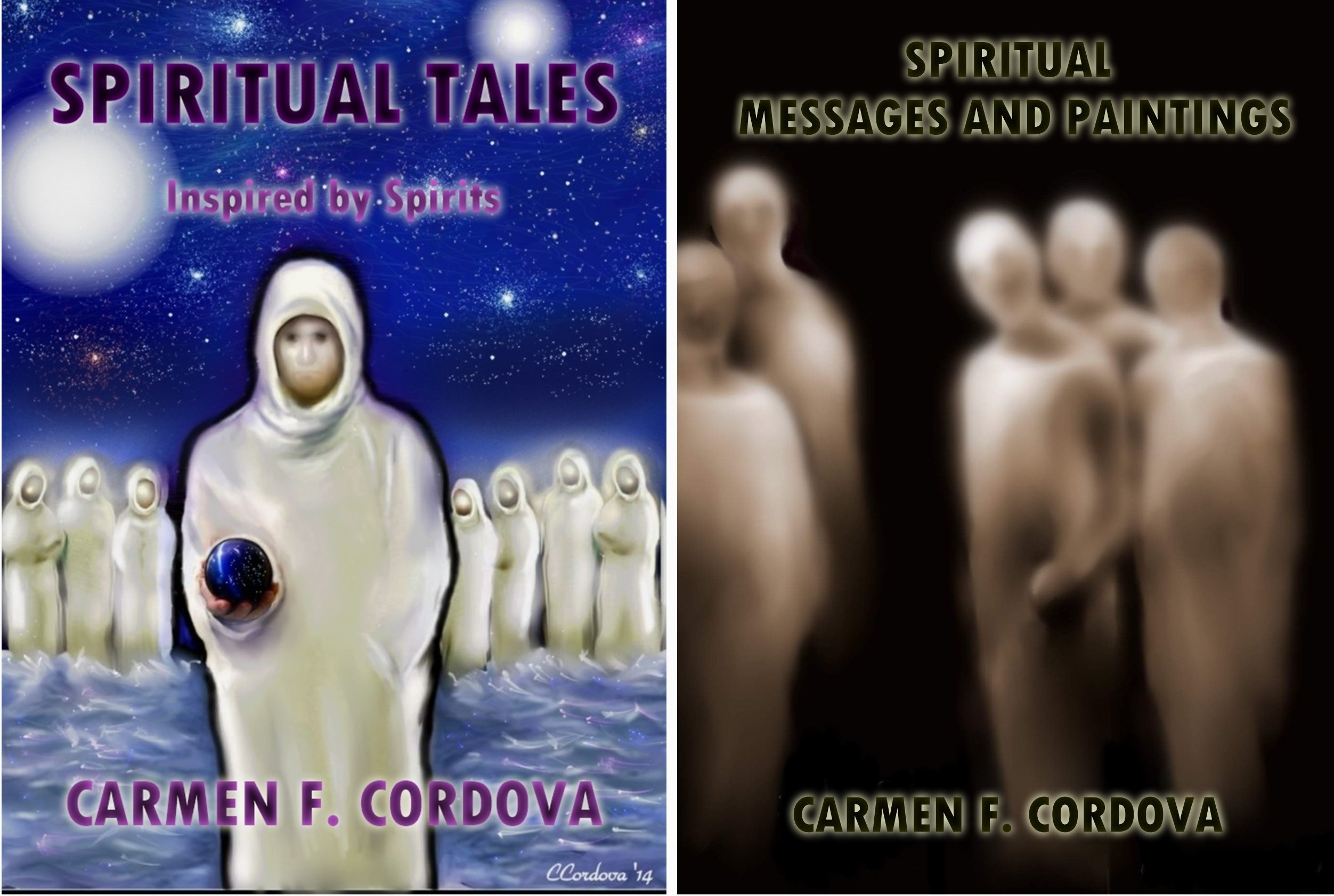Different Spiritual Beliefs and Practices
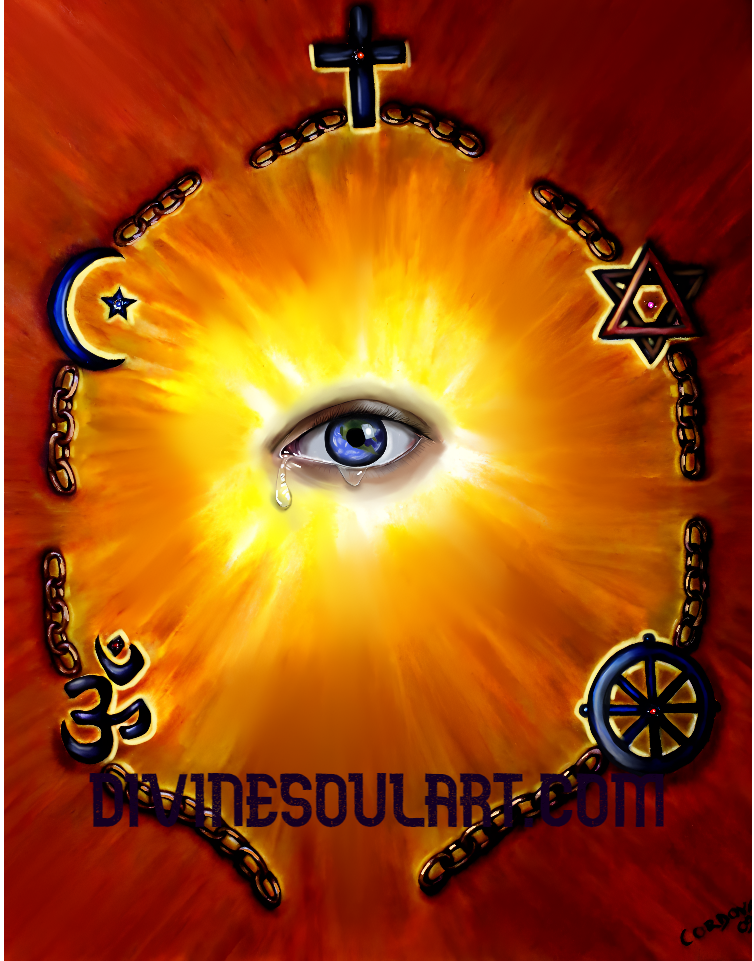 World Religions
World ReligionsAre you intrigued by the different spiritual beliefs and practices found worldwide? This article examines various spiritual traditions from different world religions and non-conventional traditions worldwide. By exploring these distinct beliefs and practices, we can gain insights into the myriad ways people seek meaning in both their spiritual and physical lives.
Understanding Different Spiritual Beliefs and Practices
Spiritual beliefs are deeply held convictions about the meaning of life, the nature of the universe, and the existence of a divine force. These beliefs provide individuals with a framework for understanding their existence and the world around them, guiding their ethical decision-making and behavior.
Religious rituals and spiritual practices provide individuals with a sense of belonging and identity, strengthening community bonds and increasing self-awareness. For instance, attending religious services or participating in communal rituals and spiritual sharing can promote a strong sense of unity and shared purpose among participants.
Spiritual ReligionsMonotheistic religions, including Judaism, Christianity, and Islam, emphasize the worship of a single, all-powerful God and share roots tracing back to Abraham, who is considered the father of these faiths. These religions have significantly influenced many societies' spiritual, cultural, and social aspects, presenting a rich tapestry of beliefs, rituals, and traditions.
Each monotheistic religion offers unique spiritual practices that guide its followers in daily life and help foster a deep connection with the divine.
Judaism
Judaism is the earliest monotheistic religion. Jews observe various religious rituals and attend services in synagogues, where they engage in prayer, study, and community activities. The Torah is the primary sacred text, guiding Jewish religious laws and practices. The covenant with Yahweh holds profound spiritual significance, symbolizing the special relationship between Jews and their God.
Jewish religious traditions, such as observing the Sabbath and celebrating religious holidays, play a vital role in fostering community cohesion and shaping individual identity for Jewish people. These practices, guided by Jewish tradition, strengthen faith and connect Jews to their historical sacred stories and cultural heritage.
Grasping the essential elements of Judaism enhances appreciation for the faith's lasting impact on its followers and the wider world.
Christianity
 Jesus Christ
Jesus ChristChristianity emerged from Judaism over 2,000 years ago and focuses on the life and teachings of Jesus Christ, regarded as the fulfillment of Old Testament prophecies. This faith is divided into three main branches: Catholicism, Protestantism, and Orthodoxy, each with its distinct traditions and practices. A fundamental belief in Christianity is the concept of the Holy Trinity, which represents the Father, the Son (Jesus Christ), and the Holy Spirit. This belief is a cornerstone of the faith and influences the understanding of Jesus' life.
Christianity encompasses various spiritual practices, such as attending religious services, engaging in prayer, and observing significant holidays like Christmas and Easter. These practices allow Christians to connect with both God and their community. Many Americans attend religious services in the United States at least once a week, highlighting faith's important role in many people's lives. Furthermore, the Ten Commandments act as a moral compass, outlining sinful actions and encouraging ethical behavior among believers.
Islam
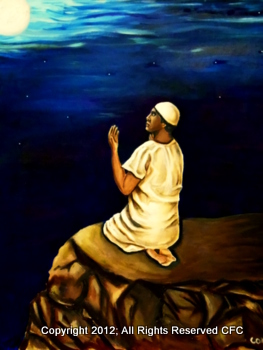 Islam- one of the major religions in the world.
Islam- one of the major religions in the world.Islam, meaning "submission to God," is defined by monotheism, the teachings of the Prophet Muhammad, and the Qur'an as its holy scripture. Muslims believe Muhammad is the messenger of God, and the faith emphasizes peace and submission to divine will. The Five Pillars of Islam—belief in Allah, prayer, charity, fasting, and pilgrimage to Mecca—are central to Muslim spiritual practices.
Daily prayers, reciting the Qur'an, fasting during Ramadan, and performing the pilgrimage to Mecca are vital aspects of Islamic worship. These practices foster a deep connection with Allah and reinforce community bonds and personal discipline. For Muslims, attending religious services at mosques is a communal activity that strengthens their faith and sense of belonging.
Understanding Islam's core beliefs and practices helps us appreciate the faith's significant role in the lives of millions worldwide, as Islamic tradition recognizes circumstances.
Polytheistic and Indigenous Beliefs
Polytheistic belief systems, which involve worshipping multiple gods and goddesses, reflect various aspects of life and nature. In many cultures, these belief systems emphasize a profound connection to the natural world and its cycles, highlighting the significance of nature in spiritual life. For example, nature worship in Native American cultures includes rituals such as the Sun Dance, which honors the life-giving powers of the sun.
In ancient Greece, the gods often represented natural elements, and rituals were performed to make offerings that would ensure abundant agricultural cycles. Similarly, in Hinduism, devotional practices include rituals dedicated to specific deities central to worship. Hindus participate in religious traditions that honor gods associated with natural forces, such as Agni, the god of fire, reflecting their deep reverence for nature.
The polytheistic and indigenous spiritual practices provide unique insights into how various cultures understand and engage with the natural world. Exploring these beliefs offers a deeper appreciation for the diversity of spiritual traditions, particularly those that honor Native American beliefs and emphasize the interconnectedness of life and the worship of nature.
Eastern Spiritual Practices
Eastern spiritual traditions, including Hinduism and Buddhism, provide a wealth of spiritual practices and philosophies. These traditions focus on personal growth, inner peace, and a deeper understanding of existence through yoga, meditation, and mindfulness.
Exploring these spiritual pathways offers valuable insights and techniques to enhance our spiritual journeys.
Hinduism
 Hindu God- Shiva- Higher Power
Hindu God- Shiva- Higher PowerHinduism, one of the world's oldest religions, includes a diverse array of spiritual practices designed to achieve harmony both within oneself and with the universe. Key practices consist of yoga, mantra chanting, and puja (worship), which help followers connect with the divine and gain spiritual insight. The sacred texts of Hinduism—the Vedas, Upanishads, and the Bhagavad Gita—serve as essential guides for spiritual knowledge and rituals.
"The Vedas focus on rituals and hymns, the Upanishads offer philosophical insights, and the Gita synthesizes these ideas with a focus on dharma, duty, and devotion" (Google).
Hindus believe in a divine power that can manifest as different entities, representing various gods. This belief in multiple deities reflects the diverse aspects of life and nature. For example, Agni, the fire god, illustrates the worship of natural forces. Additionally, karma—the spiritual consequences of one's actions—plays a crucial role in Hindu beliefs. It influences future outcomes and encourages ethical behavior.
Participating in these spiritual practices allows Hindus to attain spiritual growth, inner peace, and a deeper understanding of their role in the universe. The rich traditions and teachings of Hinduism provide valuable insights into the interconnectedness of life and the quest for spiritual fulfillment.
Buddhism
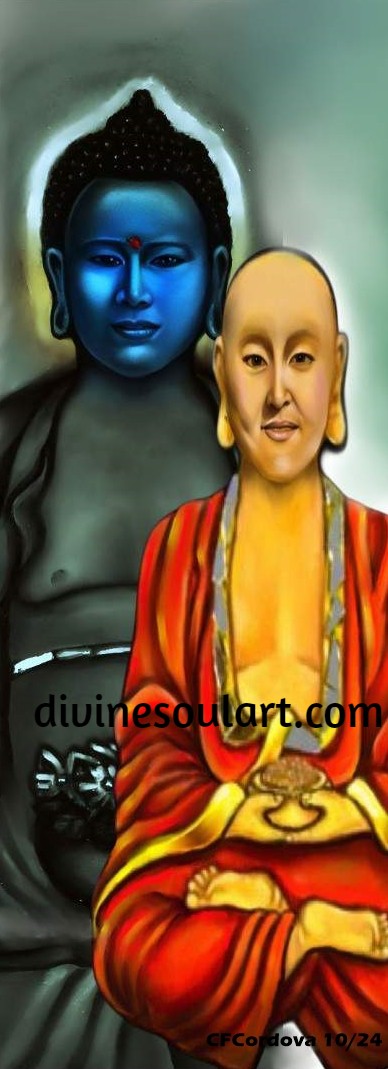 Buddism -one of the Major Religions - Higher Power
Buddism -one of the Major Religions - Higher PowerBuddhism, founded by Siddhartha Gautama, who achieved enlightenment under a sacred fig tree, emphasizes the path to enlightenment as a means of spiritual liberation.
The Four Noble Truths form the foundation of Buddhist teachings:
- Life is suffering.
- Suffering arises from attachment.
- Suffering ceases when attachment ceases.
- Freedom from suffering is possible by following the enlightened path.
Buddhists engage in a diverse range of spiritual practices, including meditation, mindfulness, chanting, and the in-depth study of Buddhist teachings, to foster qualities such as compassion, personal responsibility, self-discovery, and spiritual liberation. Through meditation, practitioners develop the ability to focus their minds and achieve clarity, while mindfulness encourages living in the present moment, enhancing awareness of thoughts and feelings without judgment. Chanting, often done in a group, deepens collective spiritual connections and reinforces key Buddhist teachings.
These practices not only provide individuals with techniques for attaining greater spiritual insight but also facilitate profound personal transformation. As practitioners delve into their minds and explore the nature of existence, they cultivate a deeper understanding of their thoughts, emotions, and the interconnectedness of all beings. This journey promotes inner peace and fosters significant spiritual growth, ultimately guiding individuals toward a more fulfilled and compassionate life.
Traditional African Religious Beliefs
Santeria
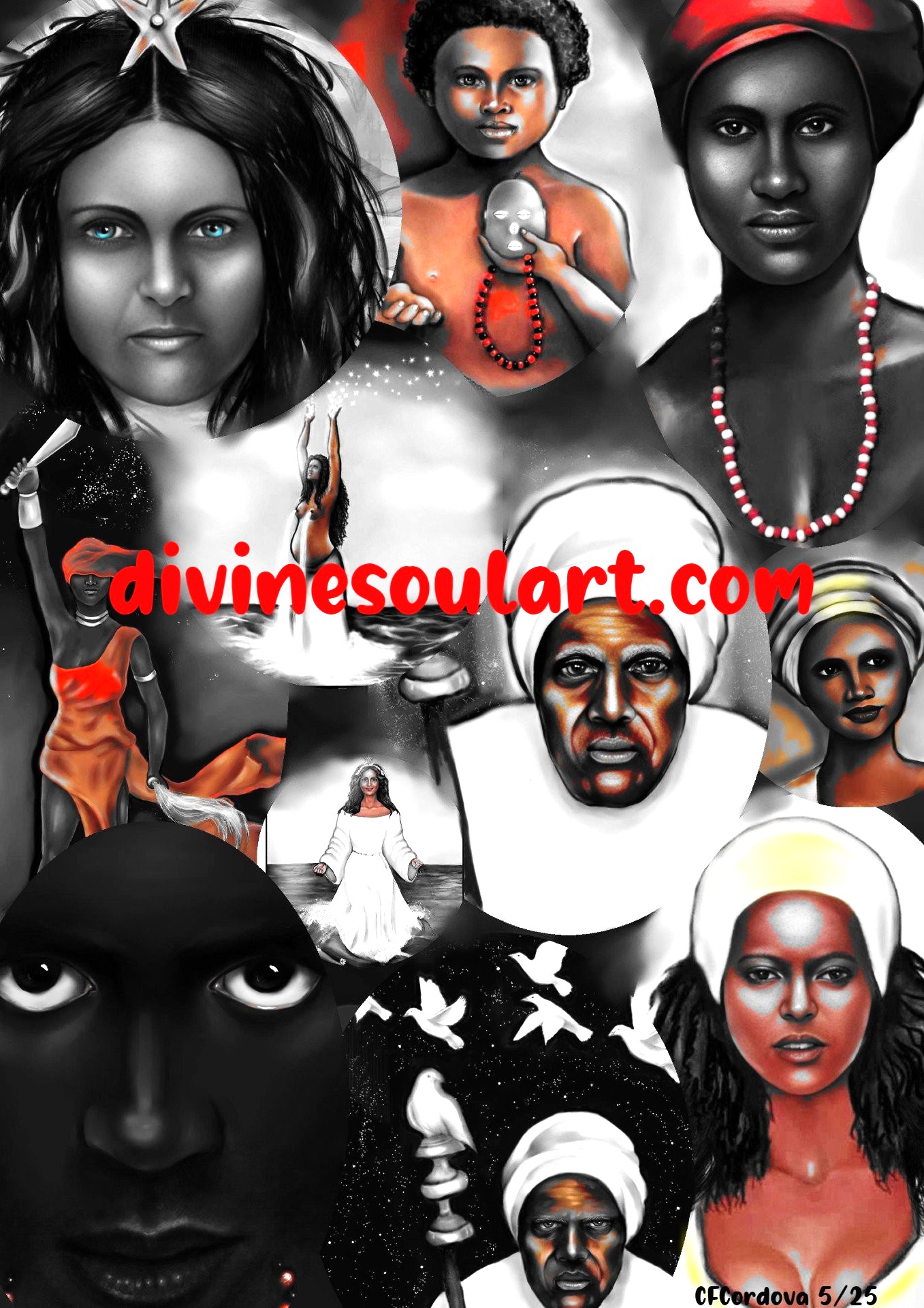
Santería is a vibrant Afro-Cuban religion that has its origins deeply rooted in the Yoruba ethnic group from West Africa. Emerging in Cuba during the 17th century, Santería represents a harmonious blend of African spiritual practices and Catholic traditions, shaped by the historical context of slavery and colonialism.
This religion is characterized by its unique form of religious syncretism, whereby Catholic saints are associated with Yoruba deities known as orishas (saints). Each orisha embodies specific natural forces, human traits, and aspects of life, allowing practitioners to connect with the divine through various means. For instance, the orisha (saint) Yemayá represents the sea and motherhood, while Shango signifies thunder, lightning, and passion.
At the core of Santería is the belief in a single, supreme God who oversees the universe. However, the orishas serve as intermediaries, guiding practitioners in their daily lives and interactions with the spiritual realm. Rituals often involve offerings, prayers, and ceremonies, which help maintain the balance between the natural and spiritual worlds. Today, Santería continues to thrive, attracting followers who seek spiritual guidance and cultural connection within its rich tapestry of beliefs and practices.
Rituals in Santería, a religion that blends African traditions with elements of Catholicism, often involve priests known as babalawos. These priests serve as vital intermediaries between worshippers and the orishas (saints).
The initiation process into Santería is marked by elaborate ceremonies that can last several days and require the individual to adopt specific practices, including wearing white clothing for an entire year. This practice symbolizes purity and devotion to the spiritual path.
These intricate ceremonies and rituals are central to the faith, providing followers with a means to connect deeply with the orishas and their ancestral lineage. Santería is primarily based on rich oral traditions, including songs, stories, and chants, passed down through generations, rather than written texts. This oral legacy preserves the religion's wisdom and teachings, enabling it to adapt and flourish.
Understanding the core aspects of Santería not only enhances our appreciation of its rich cultural heritage but also reveals the profound spiritual depth of a belief system that has greatly influenced the communities that practice it. Through its rituals, Santería provides a unique framework for understanding the interconnectedness of humanity, nature, and spirituality.
Umbanda

Umbanda is a spiritual tradition that originated in Brazil in the late 19th century. It combines elements from African, indigenous South American, and Catholic beliefs. Practitioners worship a supreme deity called Olorun, along with various spirits and orixas (deities), many of whom are associated with Catholic saints. Rituals in Umbanda typically involve music, dance, and communication with spirits. Practitioners often wear white clothing to symbolize purity.
Key spirits in Umbanda include Preto Velho and Preta Velha, who symbolize the ancestral spirits of enslaved Africans and are honored for their wisdom.
The rituals/ceremonies typically occur in personal spaces such as yards or tents, reflecting the religion's humble beginnings among the poorer population.
Sacred symbols used during rituals are essential for identifying spirits and protecting against negative energies. Common symbols include crosses, stars, triangles, and waves, which are often drawn with chalk on the floor to identify spirits, bless sacred spaces, and invoke spiritual protection.
Exploring the practices and beliefs of Umbanda offers valuable insights into the rich cultural and spiritual heritage of this Brazilian faith. It underscores the significance of community and the wisdom passed down from ancestors.
Macumba
Macumba represents a blend of various Afro-Brazilian religions, incorporating elements from Catholicism, spiritualism, and Native American beliefs. Initially, the term ‘macumba’ referred to an African percussion instrument before becoming associated with folk religious practices in Brazil.
Over time, Macumba has been misunderstood and often confused with evil practices due to its association with black magic and the stigmatization spread by some Christian groups.
The Macumba rituals feature mediumistic experiences and often involve prayers and songs in Portuguese rather than African languages, reflecting its syncretic nature. A unique aspect of Macumba is its connection to ancestors, setting it apart from other Afro-Brazilian faiths. Practitioners worship orixás, deities originating from African traditions associated with natural elements.
Bahia, Brazil, is a significant site for Macumba practices, where traditional customs have integrated into daily life across various social strata. Understanding Macumba allows appreciation of the rich cultural heritage and the resilience of Afro-Brazilian spiritual traditions.
Voodoo

Voodoo (also spelled Voodou) is often misrepresented as a religion associated with malevolence, but it is fundamentally a monotheistic faith centered around a single supreme deity, Bondye.
Practitioners of Voodoo, known as Vodouisants, engage with lesser spirits called lwa, who play a significant role in their daily lives and rituals. Rituals in Voodoo are not standardized, leading to variations in practice and beliefs among different temples and communities.
In Voodoo, communicating with spirits is a central practice. Practitioners aim to interact with these spirits, known as lwa, through various rituals, including possessions, veves (symbolic drawings), offerings, rhythmic music, singing, and dancing. These interactions enable the spirits to convey messages to humans, providing guidance, healing, or influence in everyday life.
Veves are an essential element of the Voodoo religion. Similar to the symbolic drawings in Umbanda, veves are detailed symbolic drawings created to represent the lwa (spirits) during rituals. These drawings are typically made on the ground using cornmeal, sand, or other powdery substances. In addition to serving as a visual representation of the lwa's signature, veves are used to connect with the spirit realm, invoke specific spirits, and act as an altar for offerings.
Voodoo rituals often involve music, singing, and dancing as essential ways to release unwanted energies and achieve a trance-like state, allowing participants to connect with the spirit world. The drumming and singing create the atmosphere and rhythm for the ceremonies, while the dance enables participants to let go and invite the energies of the lwa (spirit entities). As individuals dance freely, many become possessed by the energies of these spirits. Specific instruments, such as drums, rattles, and bells, are used to invoke and honor these spirits during the rituals. The particular rhythms of the drum are considered sacred and serve as a means of communication with the spirits.
Animal sacrifice is a common practice in Voodoo rituals, serving both to provide nourishment for the lwa (spirits) and to offer food for the participants.
Vodouisants may also dedicate dolls to the lwa to seek their influence; however, the widespread belief that Voodoo dolls are used to cause harm is a misconception.
Understanding the core beliefs and practices of Voodoo enhances appreciation for the depth and complexity of this often-misunderstood faith. It emphasizes the significance of rituals and the interconnectedness of the spiritual and material worlds in Vodou practice.
Spiritism
Spiritism, founded by Allan Kardec in the mid-19th century, merges scientific, philosophical, and religious perspectives. It asserts the existence of a spirit world that can be accessed through mediums and emphasizes that humans are spirits undergoing multiple reincarnations. This doctrine encourages followers to engage in charity and self-improvement, respect differing beliefs, and view science as a means to comprehend divine laws.
Mediumship plays a central role in Spiritist practices, where individuals communicate with spirits through methods such as automatic writing, channeling, and physical responses. Spiritist healing techniques, like "passes," involve transferring energy through hand movements to channel vital energies for mental and physical well-being, including the possibility of miraculous healing. In Brazil,
Spiritism has become immensely popular, with millions of followers actively engaged in community centers that promote educational initiatives and charitable activities.
Spiritism often incorporates elements from other religions, allowing its followers to engage in diverse spiritual practices while maintaining their core beliefs.
Understanding Spiritism reveals a unique blend of spirituality and science, offering a holistic approach to personal and communal well-being.
Spiritualism
Spiritualism emerged in the 19th century, primarily in America and Europe. It is based on the belief that the spirits of the deceased can communicate with the living. Practitioners, known as spiritualists, often engage mediums to facilitate this contact with the spiritual realm, sometimes through trance states. A fundamental belief in spiritualism is that a person's condition in the afterlife is influenced by their moral conduct during their lifetime.
Mediums in spiritualism often display various phenomena, such as materializations or the movement of objects, to demonstrate the presence of spirits. Spiritualist gatherings have historically included séances, where participants seek to communicate with spirits.
Over time, these séances evolved into regular church services. Additionally, spiritual healing is a key component of spiritualism, which suggests that healing can occur through the influence of spirits.
Although spiritualism has a religious aspect, it initially did not establish a formal church organization. Over time, various associations formed to bring practitioners together. The movement encountered considerable opposition and was often linked to witchcraft, leading to condemnation from different church authorities. In response to spiritualist claims, research into these phenomena led to the development of psychic research, which sought to investigate mediumship scientifically.
Shamanism

Shamanism is defined by practitioners known as shamans, who connect with the spiritual realm through altered states of consciousness to promote healing, divination, and community support. A common belief in shamanism is that spirits influence the lives of both individuals and communities. To access spiritual realms and communicate with these spirits, shamans often employ various techniques such as entering trances, using music, and conducting rituals, which may include drinking ayahuasca and participating in dietas (a drink made from a mixture of herbs to enhance the spiritual senses).
In many cultures, shamans are believed to have the ability to heal ailments caused by malevolent spirits. Shamanism is often rooted in specific cultural contexts, and the roles of shamans can vary significantly between different societies. Shamanistic practices may include using totemic items and herbal medicines, with shamans typically possessing extensive knowledge of local plants and herbs.
The term "shaman" originates from the Tungusic Evenki language and has been adopted by Western anthropologists to describe various spiritual practices around the world. Shamanism includes diverse beliefs and practices that reflect the unique cultural traditions of the Indigenous groups who engage in it.
Gaining a better understanding of shamanism provides valuable insights into the deep connection between spirituality, healing, and cultural heritage.
New Age

The New Age movement is defined by a wide variety of spiritual beliefs and practices that became prominent in the Western world during the 1970s. Followers of New Age spirituality typically emphasize personal experience, development, intuition, and a connection to nature and the universe. They often prioritize self-exploration in spiritual matters and may reject organized religious structures. Standard practices within the New Age movement include meditation, yoga, channeling, astrology, and alternative healing methods such as crystal healing and Reiki, reflecting a blend of diverse cultural influences.
Many followers of New Age beliefs hold that the universe is interconnected and that all beings are part of a singular divine source, fostering a holistic worldview. A key concept in New Age thinking is the Age of Aquarius, typically envisioned as a period of spiritual awakening and heightened consciousness. These beliefs inspire individuals to explore their personal realities and spiritual journeys, focusing on personal growth and transformation.
Understanding the New Age movement provides valuable insights into the changing nature of spirituality and how individuals strive to connect with the divine and the universe. It emphasizes the significance of personal experience and the pursuit of a deeper understanding of existence.
Non-Religious Spiritual Paths
Non-religious spiritual practices can enhance mindfulness, helping individuals connect with their inner selves and the natural world. Activities such as nature bathing, salt baths, grounding, meditation, and showing kindness to others improve well-being and increase mindfulness. These practices encourage a sense of presence and awareness, promoting both mental and emotional health.
Tools such as tarot and journaling promote self-reflection and offer insights into personal growth and emotions. Engaging in spiritual self-care activities, like practicing gratitude, can renew a sense of connection and purpose. These practices enable individuals to explore their beliefs and spiritual paths without adhering to a specific religious tradition.
Participating in non-religious spiritual practices enables individuals to attain spiritual growth and gain a deeper understanding of themselves and the world they inhabit. These practices emphasize the significance of mindfulness and self-awareness in achieving spiritual fulfillment.
Common Spiritual Practices
Each of these common spiritual practices supports personal growth and strengthens spiritual connections.
1. Meditation- This practice involves focusing on a specific object or thought to achieve calmness and relaxation. Loving-kindness meditation, in particular, encourages feelings of joy for oneself and others.
2. Prayer- Prayer is a way to communicate with the divine or a higher power through words, thoughts, or feelings. It serves as a means to express gratitude or seek support.
3. Yoga- Yoga promotes physical, mental, and spiritual health through a combination of postures, breathing techniques, and meditation.
4. Mindfulness- Mindfulness fosters present-moment awareness and enhances emotional resilience.
5. Gratitude- Can enhance spiritual practices, and spending time in nature allows individuals to connect with its beauty and power.
6- Creative Expression—Art or writing serves as a spiritual practice by fostering self-expression and a connection to something greater than oneself.
These approaches allow individuals to explore their spirituality and achieve personal growth.
Sacred Rituals and Ceremonies
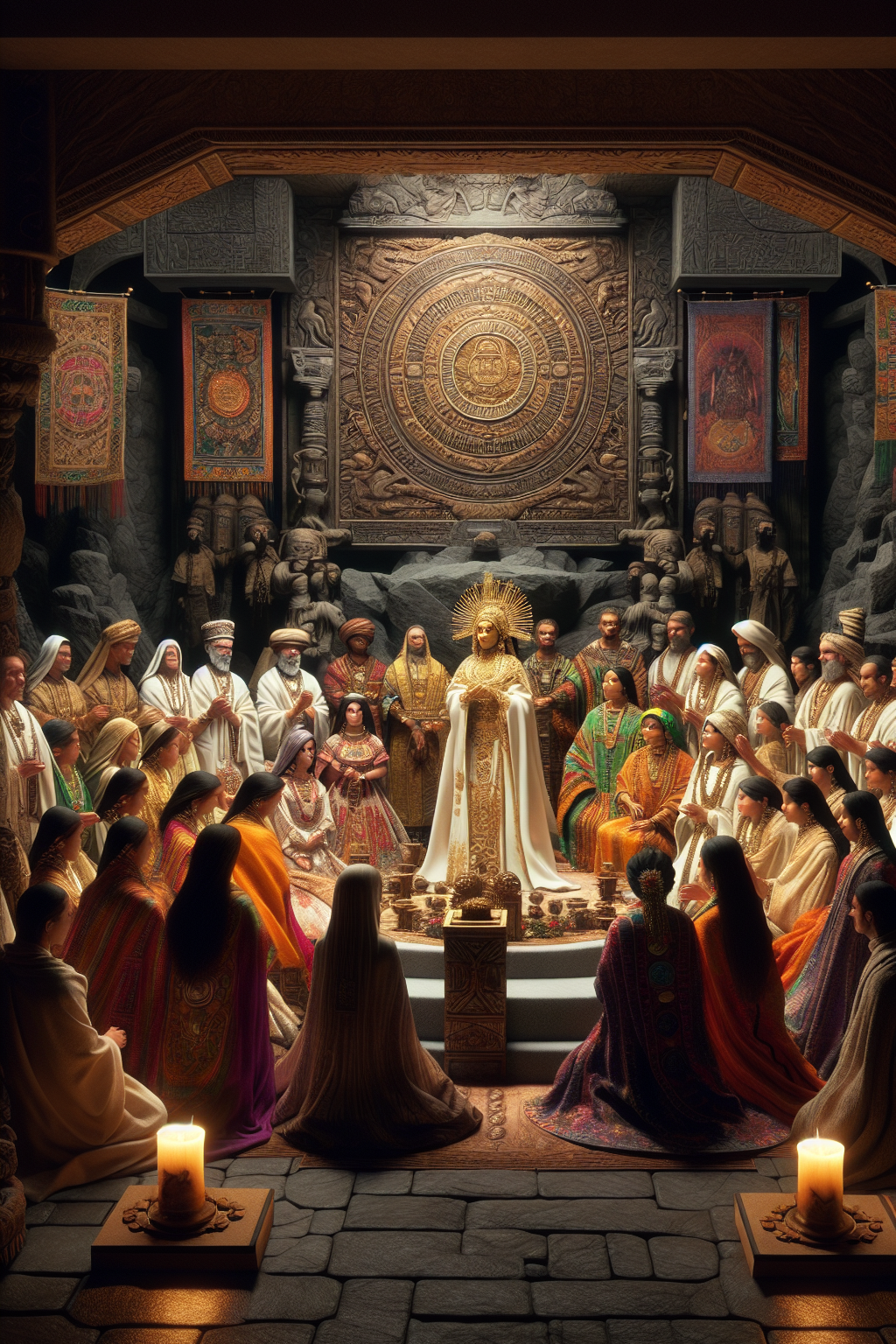
Sacred rituals and ceremonies hold deep religious significance and serve as a bridge connecting practitioners with their spiritual beliefs, communities, and the divine.
Lighting candles or incense is common in Hinduism, symbolizing the dispelling of darkness and purification of the surrounding energy.
Using crystals and gemstones in spiritual practices is thought to enhance energy protection and healing, reflecting the vibrational properties of these materials.
Bowing at temples and touching elders’ feet is a gesture of humility that fosters respect and acknowledgment of the divine presence in others. Fasting practices in various traditions often have spiritual significance, contributing to purification or self-discipline rather than being purely religious.
Ringing bells in temples is believed to clear stagnant energy, creating a vibrant atmosphere through the power of sound vibrations.
In many cultures, offering food to deities before consumption transforms the meal into a sacred act, minimizing waste and expressing gratitude. Ceremonies to honor ancestors provide closure for grieving families by facilitating a connection with deceased loved ones and expressing gratitude.
The adaptability of sacred rituals allows individuals to personalize their experiences, ensuring that they resonate with personal beliefs and circumstances. These religious rites and ceremonies highlight the profound connection between spiritual practices and the human experience, as rituals vary greatly.
Exploring Your Own Spiritual Path

Embarking on your spiritual journey starts with self-reflection, which helps you uncover your spiritual needs and desires. Seeking a quiet and comfortable space can enhance your self-reflection, allowing you to connect with your inner self more effectively. You can use meditation, journaling, and attending gatherings to explore different spiritual avenues and better understand your role in the world.
Participating in spiritual practices can be transformative, providing insights into your beliefs and values. Exploring various spiritual paths allows you to understand the interconnectedness of life and discover practices that resonate with you. Spirituality is a deeply personal experience; finding your unique path can lead to profound personal growth and fulfillment.
As you begin this journey, remember that spirituality is about discovering what brings you peace, joy, and a sense of connection. Whether through traditional religious practices or non-religious spiritual activities, exploring your spiritual path can enhance your life and provide a deeper understanding of yourself and the world around you.
Summary
In our exploration of the diverse landscape of spiritual beliefs, we have discovered the significant impact these beliefs have on individuals, communities, and cultures. Monotheistic religions such as Judaism, Christianity, Islam, and polytheistic and indigenous practices offer unique insights and practices that enhance our understanding of existence. Eastern spiritual paths like Hinduism and Buddhism, and syncretic religions like Santería and Umbanda further illustrate the diversity and complexity of human spirituality.
Common spiritual practices like meditation, prayer, yoga, and mindfulness are essential in promoting personal growth and enhancing spiritual connections. Sacred rituals and ceremonies, which hold profound religious significance, act as a bridge that links practitioners to their spiritual beliefs, communities, and the divine.
As you continue your journey, remember that spirituality is a deeply personal and individual experience. Exploring different spiritual paths can lead to significant personal growth and fulfillment. Embrace the diversity of spiritual traditions and practices and discover what resonates with you. May your spiritual journey be enriching and transformative, guiding you toward a deeper understanding of yourself and the world.
Always respect the spiritual beliefs and practices of others.
Click below and views more than 600 pieces of spiritual artwork

Spiritual Books
If you enjoy the articles on this website, you will also appreciate the short stories in the books below. Click here and continue the journey.
